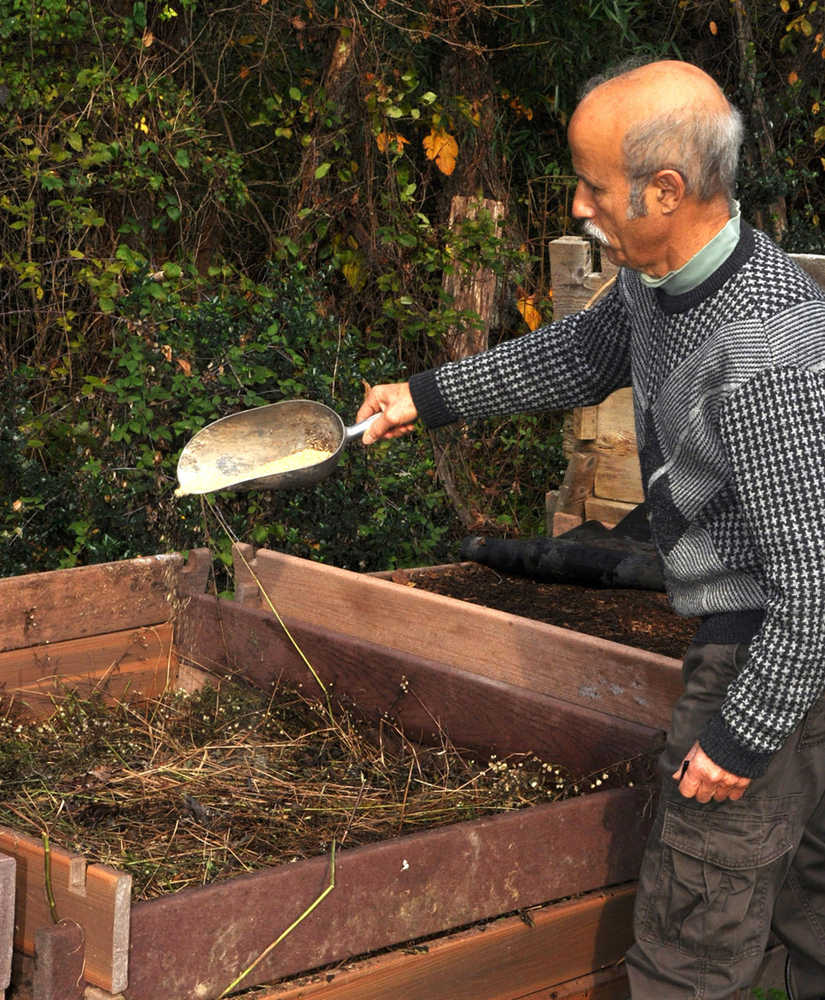As the bumper sticker on my truck reads, “Compost Happens.” Sometimes, however, it doesn’t happen fast enough.
That problem usually can be traced to some limiting factor in what a pile is fed, or to issues of moisture or aeration.
Compost piles work most quickly if the two most important foodstuffs — carbon and nitrogen — are in balance. Old, usually brown and dry plant materials, such as autumn leaves, straw, hay and sawdust, are rich in carbon. The older the plant material, the more carbon it has. Nitrogen-rich materials include succulent, green plant parts, such as tomato stalks, vegetable waste from the kitchen and grass clippings, as well as manures. Nitrogen fertilizers are concentrated sources of nitrogen, and are the active ingredient of commercial compost “activators.”
As autumn approaches, an excess of compostable materials rich in carbon build up, so the way to speed up composting of piles built in the next few weeks is to add supplemental nitrogen. No need to balance nitrogen and carbon materials exactly, because microorganisms will eventually do it for you, albeit slowly if the excess is of carbon foods.
Also, there’s more at play than just carbon and nitrogen ratios. Particle sizes, for instance. Chopping the raw materials gives microorganisms more surface area to “chew” on initially. A machete is a handy, cheap and satisfying tool for this job.
Another frequent cause of a sluggish compost pile is insufficient moisture. Sun and wind dry out piles that are free-standing or enclosed by wire mesh. A solid-walled bin speeds things along by holding in moisture and generated warmth.
There’s often not enough water when you gather together quantities of dry materials, such as autumn leaves. The cure, of course, is to add water, and an effective way to do this is by adding raw materials in layers, watering each layer as the pile grows.
The opposite condition, too much water, also slows composting. And soggy ingredients lead to another common composting problem — a pile that gives off offensive odors or attracts flies. When too much water gets into a compost pile, air is displaced and a new set of microorganisms go to work, ones that work slowly and malodorously.
The cure for a waterlogged pile is aeration, accomplished either by stirring the pile, or by turning and rebuilding it. Rotating drum bins make it especially easy to stir ingredients.
Odors due to poor aeration also result when piles contain too many dense, succulent, raw materials, such as grass clippings or kitchen waste. These materials compound the odor problem because they are rich in nitrogen, which is vented off as ammonia. In this case, turning the pile and adding some fluffy, high-carbon material, such as straw, puts things in order.
To monitor compost progress beyond what your nose or time will tell you, slide the long probe of a compost thermometer deep into a pile. Temperatures in a pile that’s been built quickly in warm weather can soar to 140 degrees Fahrenheit or higher. No heat indicates insufficient moisture, nitrogen or air, or too small a pile.
No matter what though, any pile of living or once-living materials will eventually turn to compost, and a few benchmarks signal when. Take the pile’s temperature: It has cooled down. Look at the pile: It’s mostly a dark brown, crumbly fudge. Smell it: Finished compost has a pleasant, woodsy aroma.

